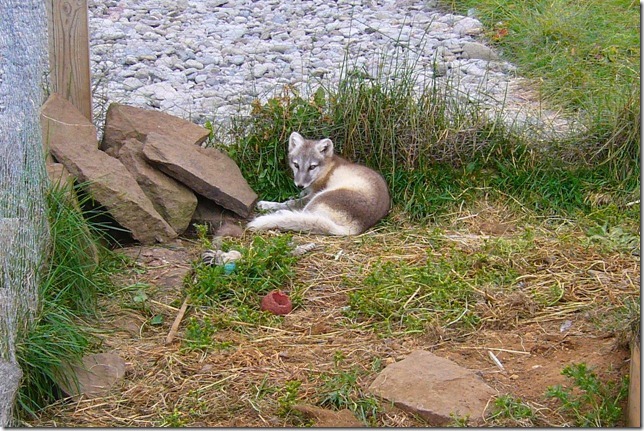Thursday 14th July, Suðavik

Awelina of Sweden
James Collier
Thu 14 Aug 2014 13:00
|
66:02.24 N, 22:59.13 W
After a peaceful night at anchor we had an alarm call at exactly 8am which
came in the form of a blast of wind from down the valley – a sudden 180° shift –
which set the boat into shallow water, from 16m to 4m in a matter of 5 minutes -
and set off the anchor drag alarm. Since the holding here seems poor here,
instead of re-setting it we set off at once for Suðavik which is in the next
valley to the west.
It’s not much of a place, but has an anchorage behind the eyri just outside
an abandoned Norwegian whaling station and a small fishing wharf. We went to
look at the anchorage first but it was full of apparently abandoned fish cages
so we decided to tie up alongside the wharf. On tying up, a very smiley lady who
was driving a fork-lift stopped and told us in perfect English that if we moved
a couple of meters forward then we’d not be in the way, at least until evening.
It took me a moment to work out her accent – somewhere on the east coast, maybe
Grimsby, I think.
We then set off on foot to find the Arctic Fox research station there
(Peter reckons they’re only soft southern foxes as we’re still 36 miles south of
the arctic circle).
It’s really an exhibition for tourists, thus with rather a good cafe
adjoining, explaining the work of the research project which takes place mostly
on the deserted Hornstrandir peninsular some 20 miles away. But they have some
pelts and stuffed foxes which have died or been shot, as well as a lot of
posters telling us things like how long they live and what they eat etc. Not
exactly hard science, but interesting nonetheless. Two things we didn’t know are
that they’re small, about the size of a large moggy, and there are two ‘morphs’
is colours. The usual one, 99% of the global population, is white in winter and
pale brown/grey in summer. The less usual one is called blue, which is actually
a chocolate colour and stays the same colour in both summer and winter moults.
The Icelandic population is 75% the blue morph despite white being the recessive
gene, assumed to be because there being no lemmings here the foxes need to catch
birds along the sea shore where the terrain is brown not white, even in winter.
The chap who told us all about it is from Gloucestershire.
Outside there’s an enclosure for rescued foxes, which contained one cub
born this May which had been abandoned or orphaned. he was pretty indifferent to
us, not frightened but just ignoring us until by chance I crinkled a crisp
packet in my pocket when putting my camera away. He immediately shot up and came
trotting over and peered at us from 30cm away – so much for them not being fed
anything but the natural food they’d catch in the wild!
 More tourists, boring...
 Crisps, now that’s more like it!
After a cup of coffee at the cafe we wandered around the village for a bit
trying to find the shop, bank and post-office which are mentioned in the pilot
book, but they turned out to be shut down so we set off for Isafjorður
instead.
|